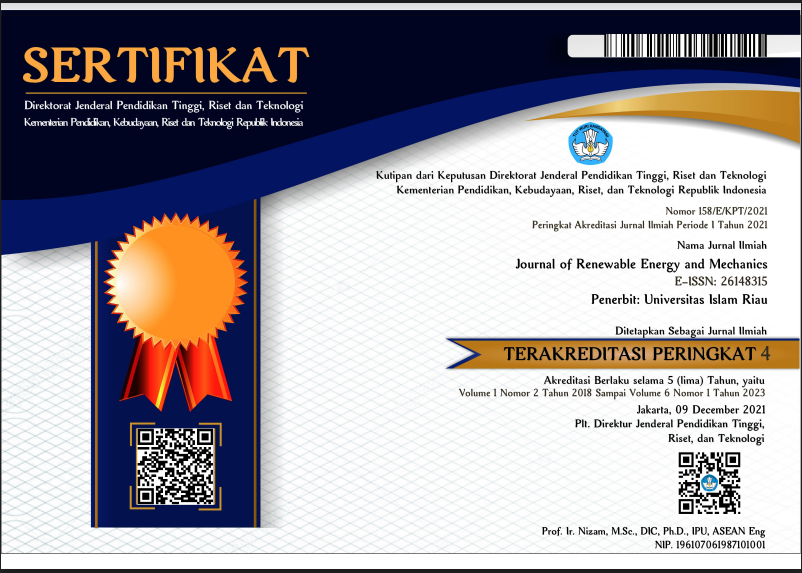ASSESSING THE SUITABILITY OF TIGER NUT FIBRE FOR STRUCTURAL APPLICATIONS
DOI:
https://doi.org/10.25299/rem.2020.vol3.no01.4417Abstract
In this work, the properties of the composite produced from waste carton with various tiger nut fibre contents having cassava starch slurry as binder were investigated. The results obtained showed the ranges of the mean thermal conductivity, bulk density, specific heat capacity, thermal diffusivity, thermal absorptivity, nailability, flexural strength and compressive strength values to be (0.0447 – 0.0603) Wm-1K-1, (683.62 – 746.32) kgm-3, (1439.811 – 1840.554) J/kg/K, (5.612 - 3.553) 10-8 m2s-1, (25.456 – 31.993) m-1, (23.9 – 100)%, (1.58 – 1.86) MPa and (2.16 – 2.78) MPa respectively between 8.3% and 43.1% of the fibre content. It was generally observed that with a choice variation in the fibre content, the performance of the developed board can be optimized for structural applications. Hence, instead of discarding the fibre as waste, recycling it can help to provide raw material for the production of cost effective and environmentally friendly materials. This will in turn reduce health risk caused by environmental pollution due to improper waste disposal practice of such material.













